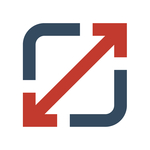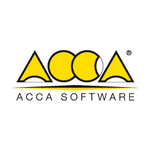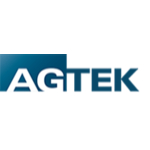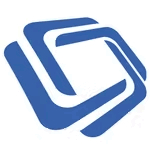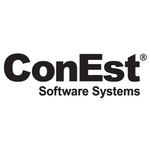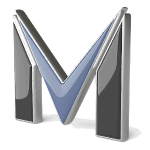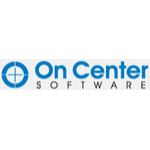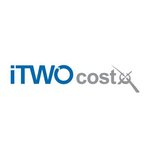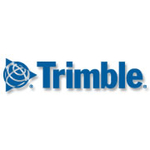TechnologyCounter provides genuine, unbiased real user reviews to help buyers make informed decisions. We may earn a referral fee when you purchase through our links, at no extra cost to you.
List of Best Takeoff Software
Showing 1 - 11 of 11 productsGroundplan is a software that revolutionizes the way event planners handle and execute their projects. Providing efficient tools and resources, it simplifies the entire process from start to finish. With its intuitive interface and customizable featu...Read Groundplan Reviews
PriMus TAKEOFF is a construction estimating software designed to streamline the bidding process and boost project efficiency. Put an end to tedious manual calculations and take flight with PriMus TAKEOFFs user-friendly interface and accurate cost est...Read PriMus TAKEOFF Reviews
Earthway 4D is a software that will revolutionize the way you manage your tasks and projects. With its advanced features and user-friendly interface, Earthway 4D will streamline your workflow and boost your productivity. Say goodbye to scattered note...Read Earthway 4D Reviews
Cubit is a software designed to revolutionize the way businesses manage their data. With its innovative technology and user-friendly interface, Cubit streamlines data organization and analysis like never before. Say goodbye to tedious and time-consum...Read Cubit Reviews
SureCount is a is a software designed to simplify the process of counting and managing data. With SureCount, you can ensure accuracy and save time, making it the perfect solution for all your counting needs. Say goodbye to manual counting and hello t...Read SureCount Reviews
Methvin is a software that revolutionizes project management. With its user-friendly interface features, Methvin streamlines workflow, increases productivity, and ensures project success. Say goodbye to clunky processes and hello to effortless projec...Read Methvin Reviews
On-Screen Takeoff is a tool for construction professionals that streamlines the process of estimating and bidding for projects. This innovative software allows for quick and accurate takeoffs from digital blueprints, saving time and improving accurac...Read On-Screen Takeoff Reviews
Countfire, the intelligent software that streamlines the process of takeoff and estimating for electrical and fire protection projects. With its user-friendly interface algorithms, Countfire simplifies the time-consuming task of manual quantity takeo...Read Countfire Reviews
SOFTScale, a powerful software solution designed to streamline and optimize your business processes. With its user-friendly interface is a capabilities, SOFTScale empowers organizations to boost productivity and drive success. Say goodbye to complex...Read SOFTScale Reviews
RIB 4.0 is a latest in software technology designed to enhance your business operations. With its robust features and user-friendly interface, RIB 4.0 takes your productivity to the next level. Say goodbye to complicated processes and hello to effici...Read RIB 4.0 Reviews
Trimble Accubid is a solution for electrical, mechanical, and plumbing contractors designed to streamline estimating processes and enhance accuracy. With advanced features and user-friendly interface, it revolutionizes the way projects are estimated...Read Trimble Accubid Reviews
- What Is Takeoff Software?
- Top Reasons Why Businesses Need Takeoff Software?
- What Are the Top Key Features of Takeoff Software?
- What Are the Top Benefits of Takeoff Software?
- What Are the Steps to Choose the Right Takeoff Software?
- What Are the Types of Takeoff Software for Different Industries?
- What Are the Technology Trends for Best Takeoff Software?
- What Are the Deployment Options for Takeoff Software?
What Is Takeoff Software?
Takeoff software refers to a type of software, commonly cloud-based, that is utilized by contractors, project managers, and estimators with the aim of enhancing efficiency and precision in the process of bid and estimate preparation.
The online takeoff software enables users to efficiently and precisely generate a construction takeoff by importing architectural blueprints and plans into a digital platform for the purpose of conducting measurements and calculations.
By utilizing precise the best takeoff software, estimators are able to efficiently and expeditiously acquire and tally measurements of pipe lengths, roofing shingle areas, wall square footage, baseboard lengths, and various other parameters. The process is executed via digital takeoff software, employing a digital mouse.
In lieu of manual estimation, it is possible to obtain precise calculations and record all these measures efficiently by a few simple actions. Additionally, it aids in minimizing mathematical and computational inaccuracies.
The utilization of the best take off software facilitates the measurement of dimensions in both two-dimensional and three-dimensional spaces, while concurrently generating precise volumetric calculations, comprehensive totals, and other relevant data.
Additionally, top takeoff software becomes beneficial in collaborating with designers who may employ diverse units of measurement, as it facilitates the conversion of these data into the required unit for estimation purposes.
The utilization of the best takeoff software has the potential to yield several benefits in the construction industry. These advantages include time savings, enhanced accuracy in estimation, reduction in errors resulting from human data entry, and the ability to measure components that are otherwise unreachable.
Additionally, the best take off software can offer a more comprehensive perspective of the project and decrease the risk of overlooking or inaccurately recording measurements.
Top Reasons Why Businesses Need Takeoff Software?
1. Reduction in manual effort: The utilization of takeoff software enables estimators to efficiently and precisely examine drawings for the purpose of conducting takeoff activities, resulting in reduced time requirements compared to manual approaches. Consequently, this technology facilitates the expeditious and effective progression of projects.
2. Increased accuracy: The utilization of the best takeoff software effectively mitigates the potential for human mistake, hence enhancing the confidence level of estimators in their estimations.
3. Automation: Takeoff software facilitates the expeditious and precise generation of plans and drawings, hence diminishing the need for labor-intensive manual efforts in performing takeoff operations.
4. Detailed material and cost breakdowns: The utilization of online takeoff software facilitates the provision of a comprehensive analysis of the materials and expenses linked to a specific project, hence enhancing the ability to compare estimates from various sources.
5. Enhanced pricing: Through the utilization of takeoff software, estimators are afforded enhanced capabilities in projecting and managing future financials.
6. Streamlined bidding process: The best take off software significantly reduces the time-consuming paperwork often involved in traditional bidding processes by enabling estimators to produce more precise takeoffs from drawings.
7. Improved job tracking: The utilization of top takeoff software facilitates a consolidated perspective of all takeoff activities pertaining to a certain project, hence simplifying the monitoring of advancements and enabling necessary modifications to be implemented.
8. Reduced reworks: The utilization of online takeoff software mitigates the potential for human error, hence diminishing the necessity for reworks on takeoff documentation.
9. Increased collaboration: The implementation of takeoff software facilitates an efficient and coordinated workflow, fostering enhanced collaboration among estimators, project managers, and engineers.
10. Reduced redundancies: The utilization of takeoff software streamlines operations by allowing for the reuse of estimation data in situations where it is relevant, hence eliminating repetitive processes.
11. Cost estimations: The utilization of the best take off software facilitates the generation of cost estimations by estimators, enabling them to efficiently determine the potential material requirements for a given project.
12. Measurement accuracy: The utilization of top takeoff software enables estimators to precisely quantify elements from drawings that would otherwise be impracticable to accomplish manually.
13. Reporting: The utilization of online takeoff software streamlines the process of generating reports by employing automated reports that are customized to suit the specific requirements of each project.
14. Visualization: The utilization of the best takeoff software enables estimators to create three-dimensional visual representations of a construction project, so enhancing the contractor's comprehension of the structure being developed and its alignment with the spatial parameters.
15. Enhance product visualization: The utilization of sophisticated technology in takeoff software enables estimators to enhance their visualization of the product they are engaged with, resulting in improved quality outcomes.
What Are the Top Key Features of Takeoff Software?
The top key features of takeoff software include:
1. Automated Takeoff: Online takeoff software functionality allows users to rapidly, precisely, and effectively generate takeoff documents based on digital plans.
2. Count Quantification: This functionality facilitates the rapid enumeration and quantification of various components inside digital blueprints, hence ensuring precise measurements.
3. Estimation & Bidding: This functionality empowers customers to generate prompt and precise estimations and assemble comprehensive bidding document packages that are competitive in nature.
4. Management Tools: This functionality offers customers the capability to effectively oversee, retrieve, and disseminate design documents among those involved in the collaborative process.
5. Reporting & Analytics: This functionality allows users to make reports using their drawings and utilize data analytics to obtain more profound insights.
6. Visualization: This functionality enables users to generate a three-dimensional representation of their plans, facilitating a more comprehensive comprehension of the project and enhancing task execution efficiency.
7. Integration: This functionality provides customers with the capability to seamlessly combine takeoff software with other applications utilized in the construction process, hence facilitating enhanced collaboration.
8. Security & Compliance: Online takeoff software functionality guarantees that all data produced through takeoff program is appropriately protected, safeguarded, and adheres to industry laws.
What Are the Top Benefits of Takeoff Software?
1. Streamlined Processes: The utilization of takeoff tool facilitates the optimization of several procedures, including but not limited to estimation, budgeting, projection, and tracking. This facilitates the optimization of a company's process and enhances efficiency.
2. Accuracy: The utilization of cloud based takeoff software has the capacity to automate previously manual activities, hence enhancing precision and diminishing the occurrence of errors.
3. Enhanced Forecasting & Reporting Tools: The utilization of takeoff software provides firms with a wide range of advanced forecasting and reporting tools, facilitating the ability to anticipate and effectively explain forthcoming trends and projections.
4. Improved Cost Control: The utilization of top takeoff software enables firms to enhance the precision of project planning and budgeting, hence mitigating expenses and potential disruptions arising from inaccurate projections.
5. Improved Efficiency: The utilization of takeoff tool contributes to the enhancement of operational efficiency inside a corporation. This phenomenon can lead to enhanced precision in analysis, expedited decision-making processes, and improved outcomes.
6. Real-time Information: The utilization of takeoff software facilitates the acquisition of up-to-date data, so empowering individuals to make decisions that are more informed.
7. Improved Collaboration: The utilization of online takeoff software facilitates enhanced communication across teams and interdepartmental coordination, hence resulting in the attainment of superior quality outcomes.
8. Enhanced Security: The utilization of cloud based takeoff software offers enhanced degrees of security, hence safeguarding precious data and resources.
What Are the Steps to Choose the Right Takeoff Software?
1. Determine the scope and features: Consider the intended applications of the software in question, the specific functionalities it encompasses, the available output formats, and the requisite level of precision.
2. Investigate software solutions: Conduct a comprehensive market analysis to ascertain the range of products or services currently accessible. To enhance one's comprehension of the software's capabilities, it is advisable to consult reviews, ratings, and testimonials provided by other users. Seek referrals from professional peers and professionals within the field.
3. Assess your budget: This study aims to examine conventional price methods, customer care and support alternatives, and the availability of a trial version for the program.
4. Consider compatibility: It is imperative to ensure that the takeoff tool is compatible with existing software applications, such as those used for estimating or accounting purposes.
5. Evaluate customer support options: Determine the nature of customer support services offered by the software company, including but not limited to live chat, phone assistance, and email support.
6. Test the takeoff software: Acquire a trial edition of the takeoff software and employ it to make a project estimation. Assess the precision and user-friendliness of the tool to ascertain its suitability for meeting one's requirements.
What Are the Types of Takeoff Software for Different Industries?
The categorization of top takeoff software is contingent upon the particular industry in question. In the construction sector, a prevalent form of takeoff software is a plan room program, which can be either manual, digital, or electronic in nature.
These software applications assist contractors and estimators in efficiently and precisely quantifying takeoff drawings and determining the expenses related to construction projects. In the engineering and architectural sectors, takeoff tool encompasses Building Information Modeling (BIM) modeling technologies that facilitate project and plan visualization.
BIM is frequently employed for the measurement of height and width, linear dimensions, surface areas, volumetric calculations, ducting, cable tray layouts, and electric circuits. Prominent Building Information Modeling (BIM) software options encompass Autodesk Revit and Bentley ProjectWise.
Computer-aided design (CAD) software finds utility within the manufacturing industry as a tool for generating comprehensive production drawings, including blueprints that provide intricate specifications for the manufacture of components and assemblies.
Computer-aided design (CAD) systems are utilized to quantify the dimensions of various design components, including but not limited to element lengths, surface areas, downspouts, pipelines, ventilation, and other pertinent design features. Prominent computer-aided design (CAD) software packages including AutoCAD, Rhino3D, and Inventor.
In the context of the aerospace industry, cloud based takeoff software encompasses a suite of mechanical, electrical, and avionics design software applications that are employed for the purpose of assessing and quantifying the cockpit, interior, and exterior configurations of aircraft.
These programs are designed to compute various parameters of airplanes, such as takeoff distances, connecting locations, wire lengths, and cable trays. Prominent systems utilized for such applications encompass CATIA, SOLIDWORKS, and X-Treme 3D CAD.
What Are the Technology Trends for Best Takeoff Software?
The primary emphasis of technology advances in the realm of the best take off software is to enhancing precision, velocity, and functionality. Accurate Takeoff Software offers a very effective and precise method for doing calculations by utilizing real-time mathematical algorithms and data.
Furthermore, there is a growing emphasis on the integration of emerging technologies, like artificial intelligence, machine learning, and augmented reality, in order to enhance the precision and predictive capabilities of estimations. The automation and optimization of Takeoff are necessary in order to deliver services that are scalable, reliable, and cost-effective.
Furthermore, the significance of mobility is growing in tandem with the emergence of cloud computing and mobile applications, particularly those designed for estimating and project tracking purposes.
The utilization of the Internet of Things (IoT) is progressively gaining traction in post-installation surveys as a means to enhance precision and streamline the generation of digital drawings, 3D models, and photographs for post-installation evaluations.
What Are the Deployment Options for Takeoff Software?
The available deployment choices for takeoff software are contingent upon the specific vendor.
In a broad sense, takeoff software can be provided in two forms: as an installable program that is hosted on-premise, or as a web application that operates on cloud infrastructure.
1. On-premise software necessitates the allocation of hardware resources, which are procured and maintained by the customer. The installation and configuration of software is normally carried out by an IT specialist. This particular mode of distribution is very suitable for extensive projects that necessitate regular retrieval of substantial datasets from several users.
2. Cloud-based services are hosted on the servers of the service provider. This mode of delivery is considered optimal in situations where projects necessitate regular data updates while requiring minimal hardware resources from the user. The cloud based takeoff software is accessed by users via a web browser, allowing them the convenience of accessing their project data from various places.
